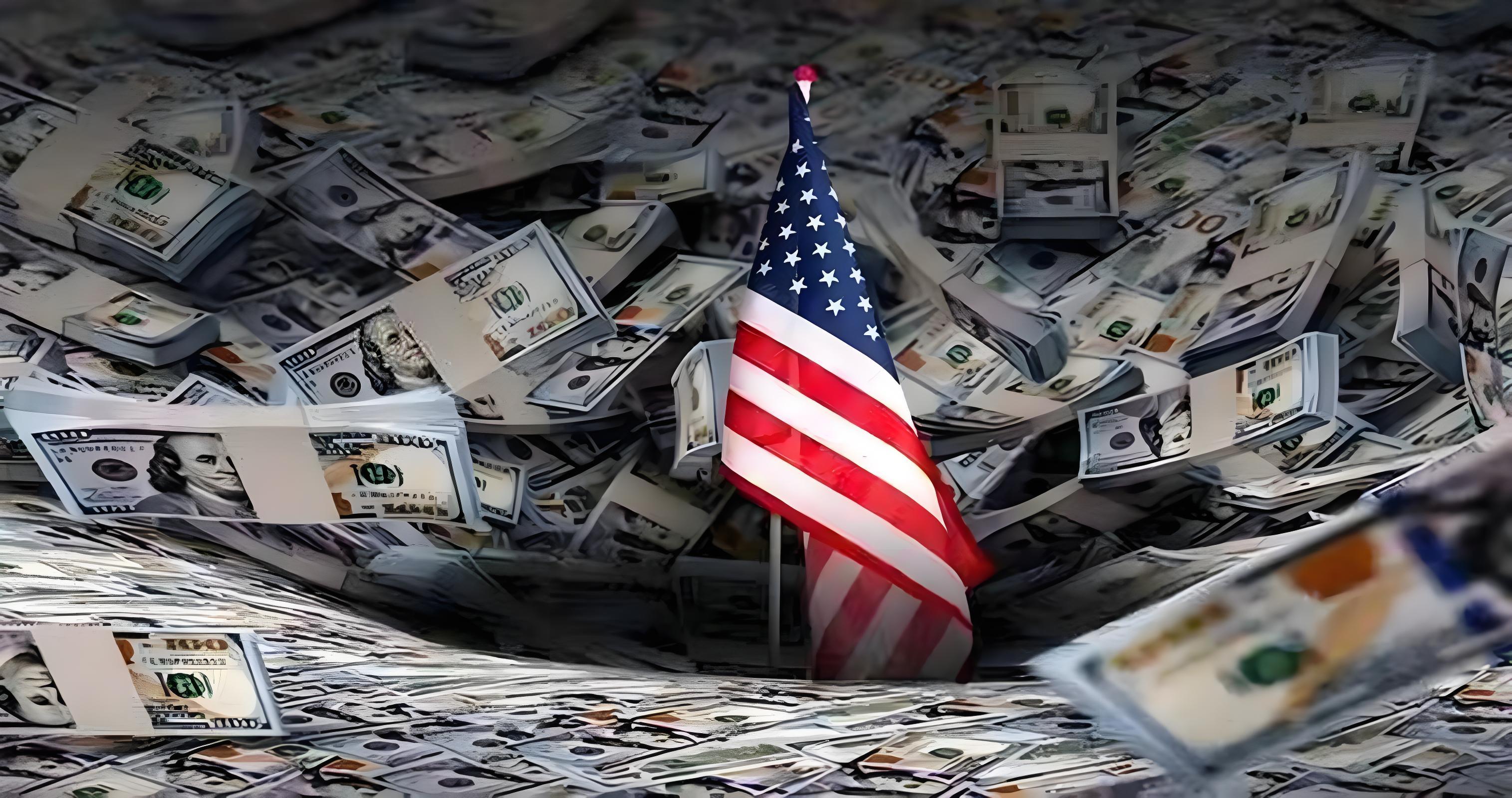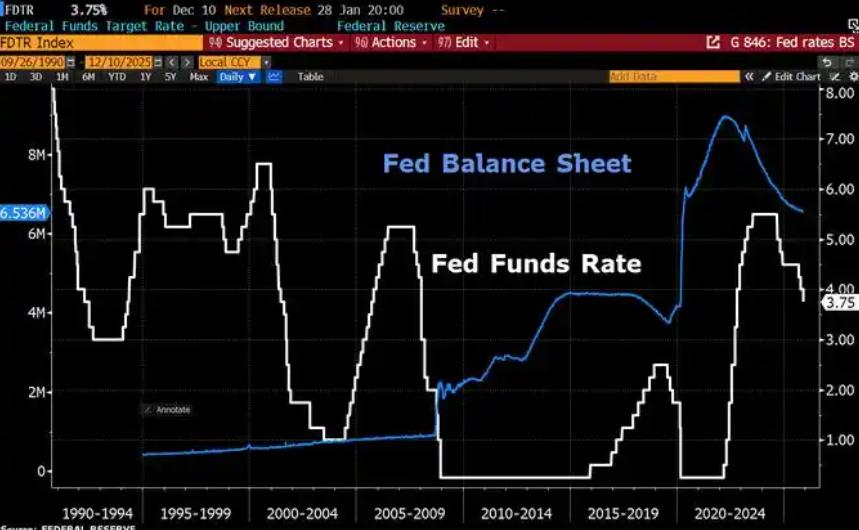
Local time on January 21st, the U.S. federal government once again approached the brink of the debt cliff, hitting a debt ceiling of approximately $36 trillion. This news, like a huge stone thrown into the deep pool of the financial world, has set off a great commotion. The U.S. Treasury Department has urgently resorted to "extraordinary measures" in an attempt to delay the looming threat of debt default. However, these are merely stopgap measures, and the underlying crisis looms like a dark cloud, threatening the economies of the United States and even the entire world.
The U.S. debt ceiling is the upper limit set by Congress on the amount of national debt that the U.S. Treasury Department can issue. Its original intention was to restrain the government from excessive borrowing and ensure fiscal discipline. But in actual operation, with the development of the U.S. economy and the continuous expansion of government spending, the debt ceiling issue has increasingly become the focus of economic and political games. Whenever government spending exceeds tax revenue and other incomes, the government needs to issue national debt to fill the funding gap. Once the debt ceiling is reached, the Treasury Department's borrowing path is blocked. The direct trigger for this crisis is that the previous suspension of the debt ceiling by Congress expired on January 1st, 2025, and the subsequent negotiations to raise the debt ceiling have reached an impasse, failing to promptly give the green light for the government to continue borrowing.
Facing the constraints of the debt ceiling, the U.S. Treasury Department has quickly taken a series of "extraordinary measures." These include redeeming part of the assets of the Civil Service Retirement and Disability Funds and completely suspending investments in this fund. At the same time, the injection of additional funds into the Postal Service Retiree Health Benefits Fund has been suspended. These measures aim to release capital liquidity in the short term, maintain the basic operation of the federal government, and ensure that all due bills can be paid. However, these measures are nothing more than robbing Peter to pay Paul and can only buy a limited amount of time. It is estimated that the buffer period gained by these "extraordinary measures" may only be a few months. If the debt ceiling issue cannot be properly resolved during this period, the U.S. government will face unprecedented difficulties.
If the deadlock over the debt ceiling persists, the consequences will be catastrophic. From an economic perspective, the first to be affected is the risk of a downgrade in the credit rating of U.S. Treasury bonds. U.S. Treasury bonds have always been regarded as safe assets in the global financial market. Once the credit rating is lowered, investors' confidence in them will be severely damaged, leading to a sharp increase in the yields of Treasury bonds and a significant rise in government financing costs. This will not only exacerbate the future debt burden of the U.S. government but also trigger severe turbulence in the entire financial market. There may be a large-scale sell-off in the stock market, and the bond market will not be immune either. The abnormal fluctuations in the yield curve will disrupt the asset allocation and risk management of financial institutions. The growth momentum of the U.S. economy will be severely curbed, and there is even a risk of falling into a recession. The willingness of enterprises to invest will decline, consumer confidence will be frustrated, the unemployment rate will rise, and the economy will fall into a vicious cycle.
At the social level, ordinary people will become the direct victims of this crisis. The government may be forced to cut or delay payments for key livelihood projects such as social security benefits and Medicaid due to a shortage of funds. The lives of millions of elderly people, the disabled, and low-income groups who rely on these benefits will fall into a difficult situation, and their basic living security will be threatened. Social dissatisfaction may thus arise, further intensifying social conflicts.
On the international stage, as the core of the global economic and financial system, the risk of debt default in the United States will have a wide and far-reaching impact on international markets. The status of the U.S. dollar as the world's major reserve currency will be challenged. International investors' confidence in U.S. dollar assets will be shaken, and a large amount of capital will flow out of the U.S. market, which may trigger financial turmoil in emerging market countries. Global trade and investment will also be affected. International trade settlement will be hindered, cross-border investment projects will come to a standstill, and the pace of global economic recovery will be disrupted.
Looking back at history, the United States is not facing the debt ceiling quagmire for the first time. In 2011, the two major parties in the United States engaged in a fierce game over the debt ceiling issue, almost triggering a debt default. This event led to the first downgrade of the credit rating of U.S. Treasury bonds, dealt a heavy blow to the financial market, caused a sharp decline in the stock market, and investors suffered heavy losses. The borrowing costs of the U.S. government soared that year, resulting in an additional interest expenditure of billions of dollars. In 2023, the Biden administration and Congress also went through arduous negotiations on the debt ceiling issue. The two sides were at a standstill, and finally, they barely reached an agreement to suspend the debt ceiling until 2025. However, just two years later, the crisis has returned, highlighting the long-term and complex nature of the U.S. debt problem.
Behind this debt ceiling crisis lies the long-standing problem of fiscal revenue and expenditure imbalance in the United States. Over the years, the U.S. government's spending in areas such as national defense, social security, and healthcare has continued to expand, while the reform of tax policies has progressed slowly, failing to meet the growing funding needs. The fiscal deficit has continued to widen, and the scale of government debt has continued to rise. At the same time, the partisan divide and interest games in the U.S. political system have also made it increasingly difficult to solve the debt ceiling issue. The Democratic and Republican parties have huge differences in their fiscal policy concepts. When it comes to raising the debt ceiling, they often use it as a political bargaining chip and set obstacles for the other party, resulting in the problem remaining unresolved for a long time.
In conclusion, the U.S. federal government hitting the debt ceiling and the "extraordinary measures" taken by the Treasury Department are just brief episodes in this crisis drama. In the future, the two parties in the U.S. Congress must put aside their political differences, prioritize the stability of the country and the global economy, and reach an agreement to raise the debt ceiling as soon as possible. Otherwise, the United States will face an unprecedented risk of debt default, its economy and society will be severely hit, and the global economy will also be dragged into the abyss of instability. The international community is closely watching the political developments in the United States, hoping that the United States can properly resolve this crisis and maintain the stability and prosperity of the global financial market.

Since 2022, the Fed has cumulatively reduced its balance sheet by $2.4 trillion through quantitative tightening (QT) policies, leading to a near depletion of liquidity in the financial system.
Since 2022, the Fed has cumulatively reduced its balance sh…
On December 11 local time, the White House once again spoke…
Fiji recently launched its first green finance classificati…
Recently, the European Commission fined Musk's X platform (…
At the end of 2025, the situation in the Caribbean suddenly…
The U.S. AI industry in 2025 is witnessing a feverish feast…